top of page
Guiding individuals through moments of anxiety with tools for immediate relief and long-term growth.
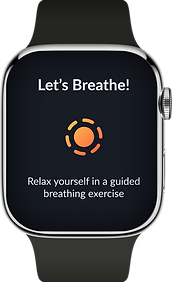
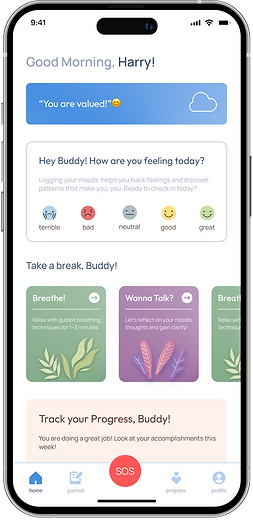
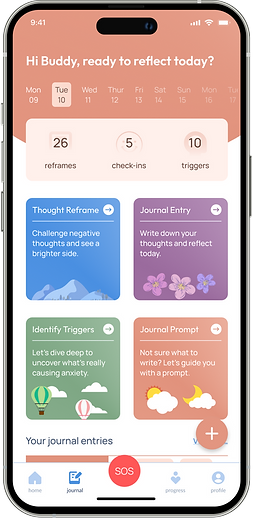
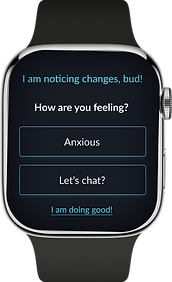
Role
UX Designer + UX Researcher
Team
4 members
Timeline
4 months
Tools
Figma, Miro, Illustrator
Let me paint a picture for you..

Think about Harry Potter, sitting under the Sorting Hat for the first time. His heart pounds, and his mind races with questions:
"What if I don’t belong? What if I fail?"
It’s that familiar knot in your stomach, the overwhelming fear of not being good enough. Anxiety can strike in moments like these, leaving you frozen with self-doubt and uncertainty.
Now imagine if Harry had something to guide him through that moment..
A tool to help him take control, understand his feelings, and find a way forward.
That’s what Dr. Muse is!
A companion designed to support people in navigating anxiety, building resilience, and reclaiming their confidence.
WHERE IT ALL BEGAN
Anxiety is one of the most pervasive mental health challenges today, affecting over 300 million people worldwide. But beyond the numbers, it’s personal—impacting students before exams, professionals in high-stress jobs, and even those navigating daily life.
According to National Institute of Mental Health (NIMH), an estimated of 19.1% of adults had any anxiety disorder in the past year.
Identifying the gaps
Most apps are designed for reflective moments, not for acute episodes - missing real time support.
Tools like breathing exercises and journaling exist, without connecting to users’ triggers or progress - causing a disconnect between features.
Apps feel robotic or clinical, making it hard for users to build trust or stay engaged over time - creating an impersonal experience.
THE HEART OF THE SOLUTION
Dr. Muse is more than an app—it’s a friend. A companion designed to help people understand their anxiety, overcome moments of stress, and grow toward resilience, bridging the gap between immediate relief and long-term growth, offering an experience that feels human, helpful, and hopeful.
SOS on Smartwatch
The SOS smartwatch offers immediate grounding techniques like breathing exercises, contact options, and calming activities, right at your wrist.


Interactive Journal
An engaging journaling space that helps users reflect, reframe negative thoughts, and uncover triggers through guided techniques like thought reframing and the downward arrow method.
DESIGN APPROACH
We built on solid research and revisited it at each stage, ensuring Dr. Muse stayed focused on real user needs while providing effective and practical support for managing anxiety.
Discover
Define
Develop
Deliver
Observations
Literature Study
User Interviews
Market Analysis
Affinity Mapping
How might we's
Personas
Brainstorming
Userflows
Wireframing
Prototyping
Concept Testing
Usability Testing
Reiteration
DISCOVER
The three dimensions of Anxiety
Anxiety is not just a feeling—it affects individuals in interconnected and complicated ways. Understanding these dimensions allowed us to design a solution that addresses anxiety holistically.
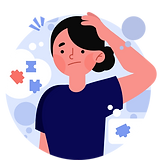
Thoughts:
It often feels like a spiral of “What if I fail?” or “Everyone judges me.” These negative thoughts can feel overwhelming, hard to escape.

Body:
A fast heartbeat, dizziness, sweating, or shortness of breath can take over, making it hard to stay calm or focused.

Behavior:
It can lead to changing actions like avoiding social events or work meetings, procrastinating, or relying on distractions.
Breaking the Cycle
We consulted a mental health professional to guide our understanding of anxiety management and discussed what can help soothe anxiety attacks. The insights we gathered:
Cognitive Tools like journaling and reframing help break the negative thought pattern cycles that cause anxiety.
Racing heart, breathlessness—physical symptoms can be calmed with grounding and breathing techniques.
Behavioral changes like avoidance and procrastination often need professional support, like counseling or therapy.
Observations
We began by observing online communities like Reddit, Quora, and YouTube. These platforms revealed how people openly discuss their struggles, offering unfiltered insights into their experiences.
What we found
Panic attacks often leave people feeling stuck and unable to escape their thoughts.
While some turned to breathing exercises and diversion techniques, others mentioned that these tools weren’t always enough.
Physical symptoms like chest pain, sweating, and dizziness make anxiety harder to manage.
Fear of judgment in social settings causes people to overthink how visible their anxiety is.
Financial struggles and loneliness are common triggers for anxiety and depression.
Online communities give people a sense of belonging and a safe sharing space.
Literature Review
We reviewed 12 academic and clinical research papers on anxiety to understand gaps in current mental health tools and uncover evidence-based techniques.
Our research questions
How can technology like wearables or apps support anxiety relief in real-time?
What strategies work best for managing anxiety long-term?
What we found
Specific places like crowded spaces or high-stress environments can heighten anxiety. Understanding these triggers is key to managing episodes.
Wearables can detect signs of anxiety, like a racing heartbeat or shallow breathing, but they often stop at detection. People need tools that help them calm down.
Several Cognitive Behavioral Therapy (CBT) techniques help recognize the root of triggers and reframe/address them in the long term.
Guided breathing and biofeedback calm the body’s fight-or-flight response, reducing anxiety in real-time.
User Interviews
We conducted ten semi-structured interviews with individuals who experience anxiety to uncover their challenges, coping mechanisms, and needs. Our goal was to understand their day-to-day struggles and how existing tools help—or fail to help—them manage their anxiety.
Who?
Students managing social anxiety during classes and presentations.
Working professionals experiencing high-pressure deadlines and meetings.
What users said
I feel overwhelmed when I have to give a presentation in front of a huge crowd.
I struggle with falling asleep. I usually sleep at 3 AM and wake up in four hours.
I stress-eat a lot. Snacking, high sugar food helps me reduce my anxiety.
I don't like talking to my friends and family when I am feeling anxious, so I keep everything to myself.
Competitor Analysis
We conducted in-depth market research to understand the current gaps and validate opportunities to design a personalized and impactful solution.

"Most features are locked behind a paywall."
High Real-time Support

Low Real-time Support
“Feels robotic and lacks genuine engagement.”

Low Personalization
High Personalization
"Helps with tracking but no help in the moment."

DEFINE
Affinity Mapping
We conducted an affinity mapping session to make sense of the diverse insights from observations, interviews, and literature reviews. We uncovered patterns that helped transform abstract findings into actionable themes by grouping similar data points.
We categorized the data into groups and found four emerging themes that helped us identify patterns to shape our design:
Physical and Emotional Symptoms
Social Anxiety and Avoidance
Coping Mechanisms
Barriers to Support
Problem Synthesis
Through our research, we found three major challenges that people with anxiety face. These challenges helped us define the direction for our design, turning them into focused How Might We questions that guided our solutions.
Pain points
Anxiety symptoms—physical and emotional —overwhelm users, leaving them without tools to manage these symptoms in real-time.
Social anxiety leads to avoidance and isolation, creating a cycle of disengagement from social and professional settings.
Users lack motivation or guidance to consistently practice effective coping mechanisms, making long-term progress difficult.
Problem Statement
"How might we provide real-time, personalized support to help individuals manage anxiety across its physical, emotional, and social dimensions?"
Persona
To ensure our designs truly address user needs, we created personas based on insights from our research.

Alex Karev
Alex is a graduate student, often juggling classes, projects, and extracurriculars. Alex struggles with social anxiety, especially during group discussions and presentations.
Goals
To manage anxiety during social interactions.
To feel confident and in control in high-pressure situations.
Needs
A tool that offers on-the-spot anxiety relief.
Insights to understand and manage anxiety triggers better.
Challenges
Overthinks what others might think of them.
Struggles to find tools that provide real-time support.
Demographics
Age : 22
Location : Indiana
Occupation : Student
DEVELOP
Brainstorming
Brainstorming was a key part of our process, where we explored creative solutions to address the challenges faced by individuals with anxiety. Over three structured sessions, we generated, refined, and aligned ideas with user needs, resulting in innovative concepts for Dr. Muse.
Session one
The team started with "Who, What, Where" prompts, listing challenges faced by users in social settings and during anxiety attacks.
We came up with over 80 raw ideas, including wearables, community tools, and VR environments.


Session two
Ideated with other teams and presented our challenges and initial concepts to them, gaining fresh perspectives and feedback.
Narrowed down directions to focus on wearable technology and journaling-based solutions.
SOLUTION
A supportive tool designed to assist individuals dealing with anxiety, combining real-time relief through a smartwatch, thoughtful reflection with guided journaling, and actionable insights from personalized progress tracking to foster confidence and control in daily life.
User flows
Smart watch User-flow

Mobile app User-flow


Style guide
COLOR PALETTE
Primary Colors

Cornflower Blue, #4A90E2
Shades of blue reflect calmness and security.

Dusty Purple, #9B6B9E
Soothing purples provide a soft, calming energy.

Sage Green, #7FA885
Earthy greens promote balance and serenity.

Muted Peach, #E2937D
Inviting tones of peach symbolize care creating a sense of belonging.
Secondary Colors
#2C3E50
#B3BDCC
#C5E1A5
#FF5757
#FFDE80
Outfit Medium
TYPOGRAPHY
Inter
We chose Inter because it is clean and easy to read, perfect for smaller screens like the smartwatch, and detailed sections like journaling.
Inter Regular
Inter Medium
Inter Semibold
Inter Bold
Outfit
We chose Outfit font as it adds a modern, friendly feel, making key highlights and headers stand out
Outfit Regular
Outfit Semibold
Outfit Bold
Wireframing
Watch senses Anxiety




Watch senses physical changes
Watch gives breathing prompts
Watch gives multiple options to the user
Watch adds the attack to the journal
Guided Breathing








Journalling in mobile app

Home Screen of the journal app showing trigger shortcuts

Attack is added to the mobile app after watch senses it

Anxiety Attack details and history for progress

User can journal their thoughts

Details about what exercises helped for progress tracking

Details are saved to the records and used for tracking
DELIVER
Testing
We conducted concept evaluation with two therapists and think-aloud sessions with eight users experiencing anxiety. The key goals were:
1. Validate the intuitiveness of SOS features.
2. Gather feedback on the usefulness of journaling techniques.
What users said
-
Clarity of Emojis: Add texts below emojis on alert screens.
-
Navigation Issues: Add a back button in certain workflows so users don't feel stuck.
-
Explanatory Guides: Add guides before exercises so users don't feel overwhelmed.
What therapists said
-
Overwhelming Layout: Add simpler layout in the home page to essential features.
-
Explanatory Guides: Add guides before journal exercises to keep users informed.
-
Complex terminology: Change complex terms like "Interactive Journal" and "Downward Arrow".
Solutions in Action
1
How might we provide users with immediate tools to manage anxiety attacks and regain control in real-time?
Users reported feeling overwhelmed during anxiety episodes, often struggling to calm themselves without external help. Many current solutions are designed for reflective moments, not acute episodes requiring immediate intervention.
Watch detects physiological changes and sends a check-in with options for coping exercises.


Users can engage with the 333 Puzzle (3 things a person can see, listen and feel) to shift focus and ease anxiety.

2
How might we help users reflect on their anxiety episodes to identify triggers and build resilience?
Users expressed difficulty identifying the root causes of their anxiety and finding personalized ways to address triggers.
Simplifies cognitive behavioral therapy for everyday use.
Step-by-step questioning guides users toward the root cause of their anxiety.


This feature empowers users to gain clarity on their thought patterns, improving self-awareness over time.
3
How might we show users their growth and encourage them to stay engaged with their mental health journey?
Many users abandon apps because they don’t feel progress is being made or don’t see visible improvements in their mental health.
This feature Displays trends in moods, triggers, and successful coping mechanisms over time.


Displays common triggers and corresponding coping strategies.
Highlights improvements and consistency, fostering a sense of achievement.
GROWTH THROUGH DESIGN
Working on Dr. Muse was more than just a design journey—it was a lesson in empathy and perspective. Engaging with users and therapy professionals helped me see the same problem from different standpoints, enriching the design process. Reaching out to therapists was challenging and rewarding, pushing me to step out of my comfort zone and learn from their expertise. This project showed me how research and design can create something meaningful, and it reminds me of why I love solving problems that matter.


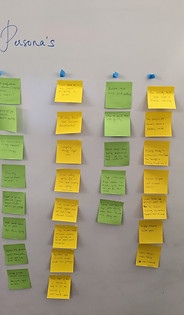
bottom of page